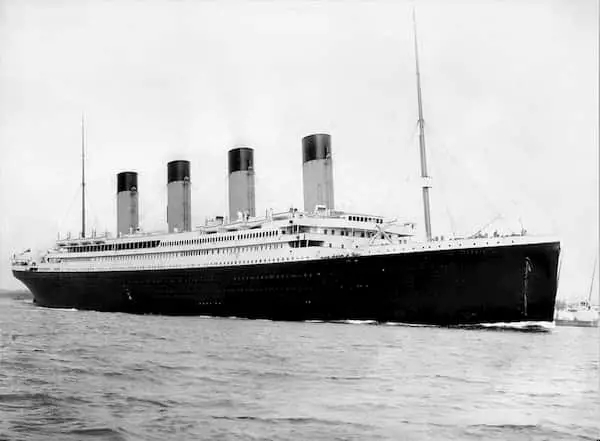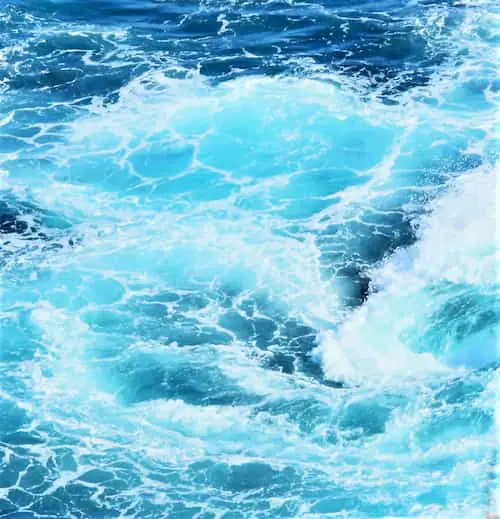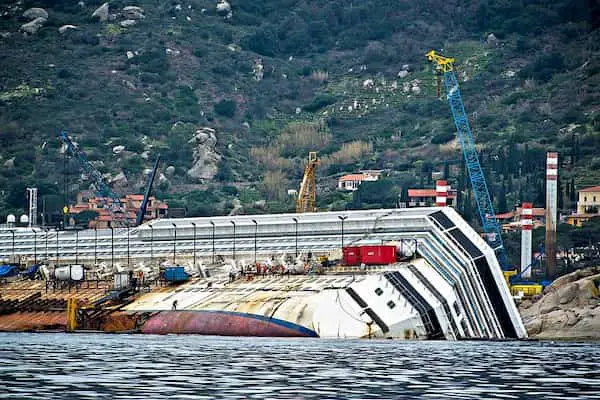Will a sinking ship pull you under?
Will the sinking ship suction pull everything close to the hull, down with it?
If you should ever be so unfortunate to find yourself on a sinking ship, you have to get as far away as possible when the hull breaks the surface and disappears into the dark abyss. Every sailor knows this. Get away from the hull! Or she will suck you down with her…
We’ve seen it in films, we’ve read it in books. It’s just common knowledge. But it is true? Is there really such a thing as a vortex that pulls you down when the ship sinks?
The theory behind it
The theory behind the sinking ship suction is as follows:
- Anything moving through water does so by displacing water around it. When a large body sinks, water will rush in to fill the empty space behind it and thus create a vortex. The force of this vortex depends on the shape, size, and speed of the sinking agent.
 What do those who actually have been on a sinking ship say?
What do those who actually have been on a sinking ship say?
When the Titanic sank, there were many tellings from first-hand eyewitnesses about what had happened.
Eugene Daly was swimming at a safe distance from the ship. When one of the funnels went under the surface, a whirlpool opened up for a few seconds when water rushed into the boiler room. Those in the immediate area went straight down. “…those poor people that covered the water were sucked down in those funnels… like ants”
Others who were among the last to leave the ship… Practically standing on top of it as it went down, claimed they didn’t feel any sinking ship suction at all.
Chief Baker Charles Joughin, the last man to leave the ship, claimed it was like taking an elevator. He didn’t even get his hair wet.
The truth about what would happen
It seems to be that the actual pulling effect isn’t what you should worry too much about. However, when a very heavy, solid, and flat object goes down it definitely creates a vacuum on top of it. If you should place a cookie on top of it, it would probably follow it to the bottom.

But a modern ship is made for fuel efficiency and it is extremely hydrodynamic. And it goes down neither in a straight line nor very fast. Even if it went straight down, bow first, the rounded stern created specifically to NOT provoke a back-pulling vortex, would not pull very much.
There are more theories than that one though
- When the ship is going down, the empty space inside will fill with water. When that happens a strong current could pull you inside the hull.
- The strong movement and the air inside the ship will mix with the seawater immediately above the sinking structure. On top of the boat, when it’s going down, that water will be less dense and less able to keep you afloat. You will fall through.
The air would be a much more deadly opponent than the sinking ship suction. And air can be very dangerous when you deal with water… When they change place, air, and water. The air rushing out of the hull and water rushing in to take its place.
Air mixing with water is another very hazardous matter. The air can create a large area of whitewater with much less density than “solid” bluewater. The ship could create a hole for a few seconds, and if you find yourself in that hole you would have to struggle to stay afloat.
Even deadlier is the water rushing in while you’re still inside trying to get out. Many deaths in modern times can be attributed to people not acting fast enough, and therefore remaining trapped inside.
Then there are many other dangers with a sinking ship. Most of them involve falling, being hit by things, and more of that sort. Or buoyant flotsam pulled down with the sinking ship. When it breaks loose under water, it becomes a missile thrusting upward.

So what should you do?
- Get acquainted with the ship BEFORE you start off. Check where the floating devices are, check escape routes, and look for meeting points. Studies on people’s behavior in an emergency situation show that only 15% can stay calm and rational. Most people panic.
- Listen to and follow instructions from the crew. The international evacuation signal is Seven short blasts and one long.
- Only attempt to escape on your own if there is no authority present to give directions. (An old sailors-tip: Follow the rats if you see them. They will find the way out.)
- If you can’t hear instructions or the crew isn’t helping, head up and off the ship. Never go down or inward. Try to reach the outside of the ship.
- Do not take elevators or escalators.
- To find the way to the lifeboats, look for crews assisting passengers.
Conclusion
No, a modern ship does not create very much of a sucking effect. when it sinks. There are many other reasons why someone could be pulled down with a sinking ship, though. And the biggest danger by far is not getting out fast enough.
sources